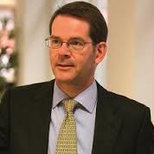On public sector pensions, the Government is marking its own homework
SUGGESTED



But in one really important area – public sector pensions – that scrutiny has been almost completely absent. There are, I believe, several reasons for this. Firstly, pension costs are not ‘fact’; they are the result of actuarial modelling and a great deal of demographic and financial data. Secondly, pensions for public sector workers are a lighting rod for industrial relations disputes, and Governments of all hues would like to avoid these damaging disputes if at all possible. Thirdly, decisions about pension provision (particularly unfunded provision – which is what public sector pensions are) come home to roost several decades after the decision-maker has retired. Naughtily, I might add: on a generous public sector pension!
Some 16 years ago the Government chose to adopt two differing accounting methods for the ‘cost’ of public sector pensions. This was a decision designed to retain Government control over the cost of these pensions; but the ‘cost control’ was illusory. These reporting arrangements allowed control of the apparent costs but not the actual costs, so pensions continued to appear ‘affordable’ and ‘reasonable’. In reality, they are neither.
At the heart of this sleight of hand is the choice of interest rate used to calculate the amount that an arms-length pension fund would have to charge an employer to be able to pay the promised pension. This is not a new problem, and the solution agreed internationally nearly two decades ago, embodied in International Accounting Standards, was to use a market interest rate known as the ‘AA Bond Rate’. The relevant International Accounting Standard is called IAS19.
Every company in the UK with a defined benefit pension scheme is required to account their pensions costs and liabilities using IAS19. The UK Government also accounts their pension costs and liabilities using IAS19, but instead of using the resulting values to inform the debate about the cost and value of their staff’s pensions, they use a completely different interest rate from the IAS19 one – called the ‘SCAPE interest rate’. Indeed, the IAS19 results are reported deep in the public sector’s pension accounts, but nothing is done with these numbers, and so no-one pays any attention to them. By contrast, the SCAPE results are used to determine how much the Treasury, acting as the Government’s pension fund, charges public sector employers and employees (NHS; local education authorities; doctors; teachers; etc) for their pensions.
Why would the Government want to do this, and what effect does it have?
It is impossible to know why the Government moved away from using ‘official’ (i.e. IAS19) interest rates to unofficial and discretionary (i.e. SCAPE) ones. But the effect has been that in every year since 2005-06 the Government has consistently underestimated the cost and value of the pensions offered to its 5.7 million employees.
This may sound all very technical, and a problem more suited to the pages of an actuaries’ journal rather than an economics think-tank. But it is in reality a hugely important issue on a national budget scale. The following numbers should convince you.
Take the NHS. In 2020-21, NHS employers were charged 20.6% of their payroll, and employees were charged 9.8% of their salary, (i.e. total of 30.4% of the salary bill) by HM Treasury for the NHS employees’ pensions. This was the highest percentage ever charged since the advent of the NHS pension in its present form, and many employers and employees have been complaining about recent rises in this combined percentage from the upper teens 15 years ago. But these figures are based on SCAPE interest rates (i.e. chosen by Government). If the amounts charge were based on IAS19, they would have a combined value of 62.2% of the salary bill. The 62.2% charge is the correct one, based on internationally agreed standards which apply to all UK employers.
So – the Government is paying a hidden subsidy of (on average) over 30% of salary to every public sector employee – roughly amounting to some £57bn of annual unreported cost across the whole public sector.
Pensions which cost over 60% of salary are clearly over-generous, and cannot be sustained in a world where private sector employees are lucky to get 15% of salary from their employers. Even worse, the money for all the Government’s pensions promises to its employees have not been set aside in a fund (which is compulsory for private companies), so the liability – which will touch £2.5 trillion on 31 March 2021 (and is larger than the national debt) – will have to be paid by future taxpayers most of whom do not benefit from this pensions largesse.
Read Neil Record’s latest IEA report “The Great British Rake-off. How government has misled Parliament and the British people on public sector pensions”.




